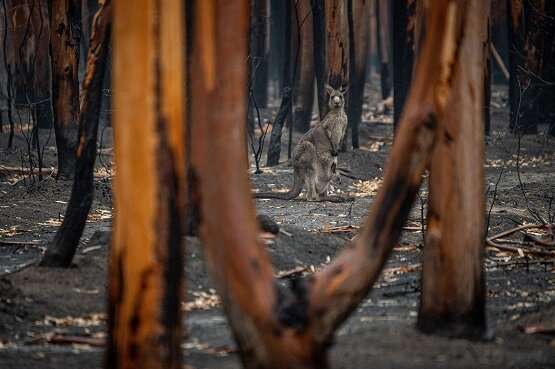Research: Mobile phone signals could measure bushfire smoke levels

A breakthrough study led by Monash University has shown the great potential for mobile phone signals and data to be used in the detection and measurement of bushfire smoke concentrations.
While the use of this technology remains in its infancy, the discovery shows great promise in complementing current initiatives, like satellite remote sensing, in sending early warnings to residents in affected areas and reducing the harmful impacts of smoke on people.
The 2019-2020 mega bushfires in Australia created hazardous health conditions due to smoke entrainment within the atmospheric boundary layer. The bushfires burnt more than 46 million acres, displaced tens of thousands of people and resulted in 34 casualties.
Led by Dr. Adrien Guyot, Research Fellow in Monash University's Department of Civil Engineering, this Australia-first study analyzed radio link signal fluctuations during smoke events associated with the 2019-2020 Australian bushfires.
Observations showed that dry air containing large amounts of smoke within a surface layer above the ground acted as a lid, reducing dispersion, trapping and maintaining high ground-level concentrations of smoke. This climate also created irregular broadcast conditions for radio links and operational weather radars.
Unique signal patterns were identified and shown to be related to these specific atmospheric conditions and smoke concentrations by analyzing the received signal levels of these links.
Researchers say this routinely recorded data by telecommunication companies could be used to predict smoke concentrations at ground level during haze events, in collaboration with other hazard reduction technologies.
The study, developed in collaboration with Delft University of Technology (The Netherlands), Wageningen University (The Netherlands), the Australian Bureau of Meteorology and Monash University's School of Earth, Atmosphere & Environment, was published in the journal AGU Advancing Earth and Space Science.
"The great strength of the mobile phone network data is that it provides very unique spatially distributed information on the atmospheric stability during smoke events," Dr. Guyot said.
"This is important information because atmospheric stability is strongly related to the occurrence of dense smoke close to the ground, being both a precursor and consequence of the high concentration of smoke."
Dr. Guyot said the future of improved smoke prediction capabilities is likely to be a blended product combining modeling, satellite remote sensing, weather radar ground clutter, in-situ observations and mobile phone data.
Government bodies routinely conduct the monitoring of air quality, specifically particulate matter (PM). Due to the high costs of maintaining air quality stations, especially in rural areas, measurements of PM with diameter less than 10μm are usually contained to dedicated stations placed in urban areas that link to road traffic.
Received signal levels (RSLs) from radio links have been used to measure rainfall and humidity. Radio links, otherwise known as commercial microwave links (CMLs), are the backbone of cellular communication networks.
Researchers found the qualitative information from CML signals showed differences to climate and atmospheric conditions, as well as temperature inversions that could be precursors to elevated PM levels associated with a smoke incident.
"I can see this data being ingested in predictive capabilities no earlier than a couple of years from now, only once the technology and the understanding of processes will have reached maturity. This essentially depends on if adequate human resources and financial support are allocated to its development," Dr. Guyot said.
More information: Adrien Guyot et al. Wildfire Smoke Particulate Matter Concentration Measurements Using Radio Links From Cellular Communication Networks, AGU Advances (2021). DOI: 10.1029/2020AV000258
Journal information: AGU Advances
Provided by Monash University





















